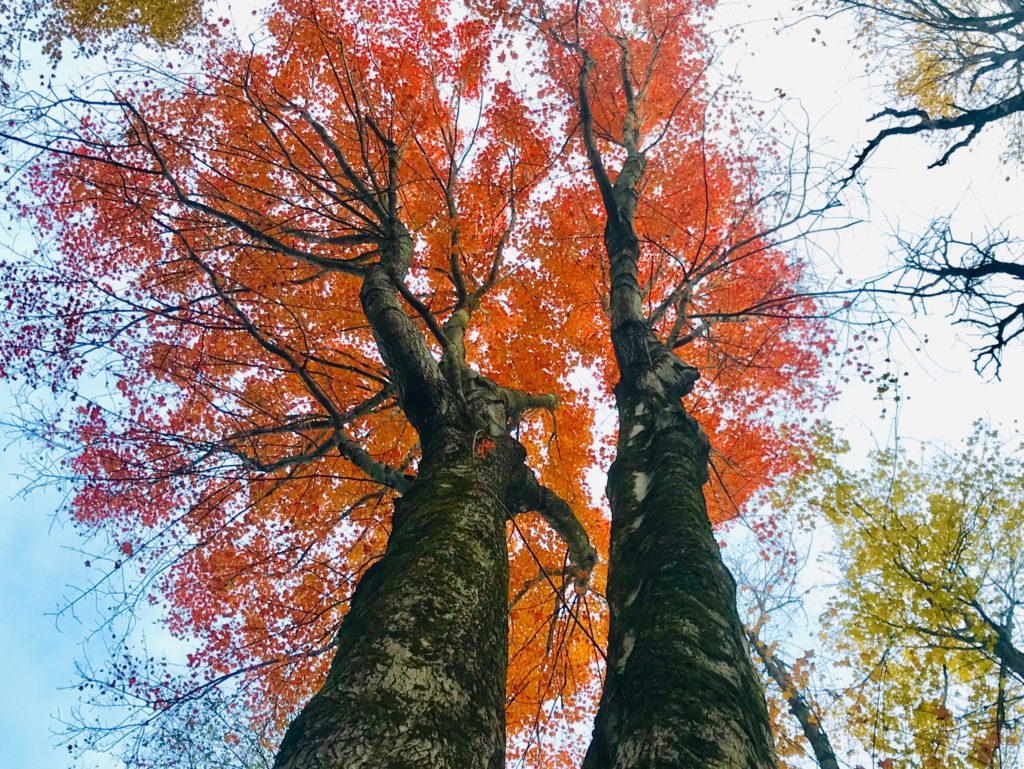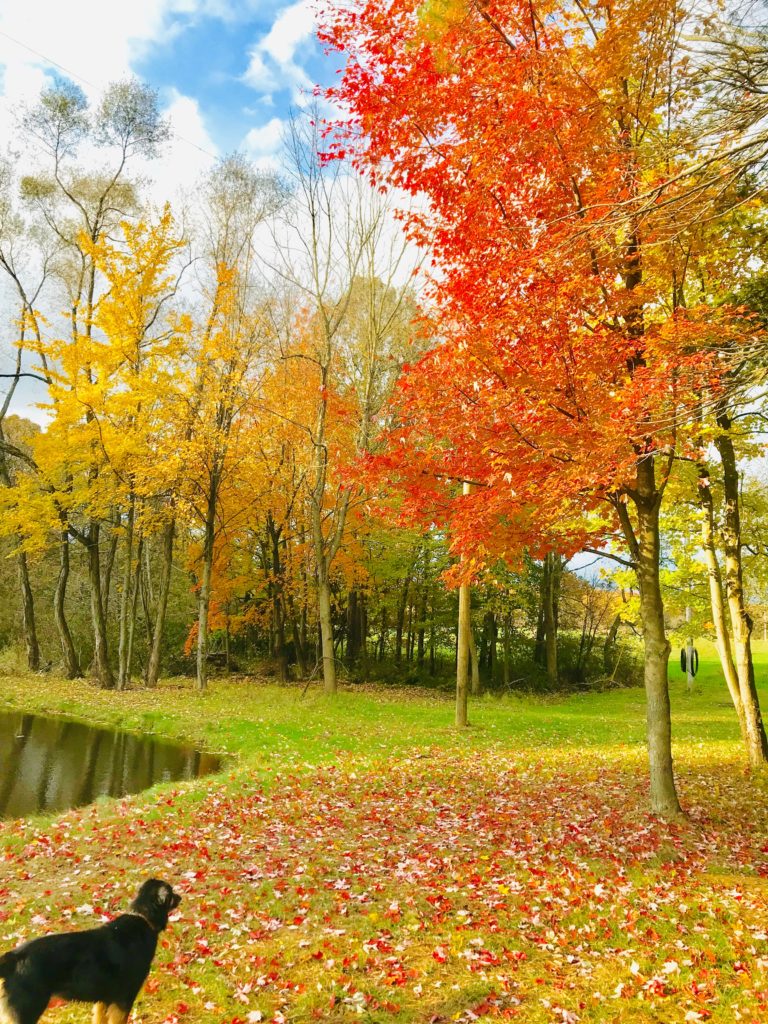Red, orange, or yellow?
Have you ever wondered why some leaves turn yellow in the fall, while others turn red or orange? The answer is pretty science-y. Read on to find out!
Once the temperatures drop and days get shorter, leaves stop the process of photosynthesis to save energy, because they aren’t receiving the strong sunlight of spring and summer months. Since they are not producing chlorophyll anymore, which is what gives leaves their green color, it allows other pigments to shine through. “Carotenoids” are the same pigments present in carrots and give leaves an orange color. “Xanthophyll” is the pigment responsible for yellows. These pigments have been in the leaves all along, but chlorophyll overpowered them so all we saw was green.
Red leaves, however, emerge for a different reason. “Anthocyanins” are molecules that protect leaves from too much sunlight once photosynthesis is no longer occurring, sort of like sunscreen. This is why the upper and outer leaves of some yellow trees look like they are tinged with red. Anthocyanins also lower the freezing point, and offer protection from frost, allowing trees to keep their leaves a bit longer. In maple trees, the red pigments come about in the fall from trapped glucose (sugar).
It has been said that the best place in the world for fall foliage is the Northeastern United States due to its climate and wide range of deciduous trees. In that case, we count ourselves lucky to live in the heart of it all!
Source: https://www.sciencemadesimple.com/plants-in-winter.html

